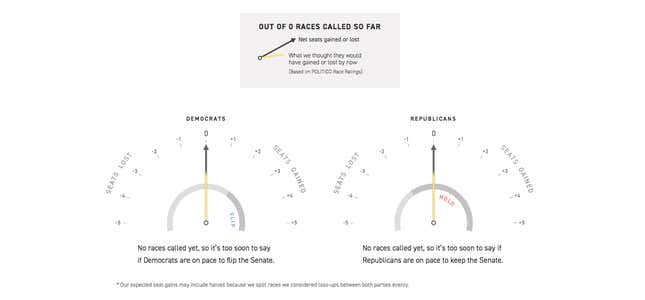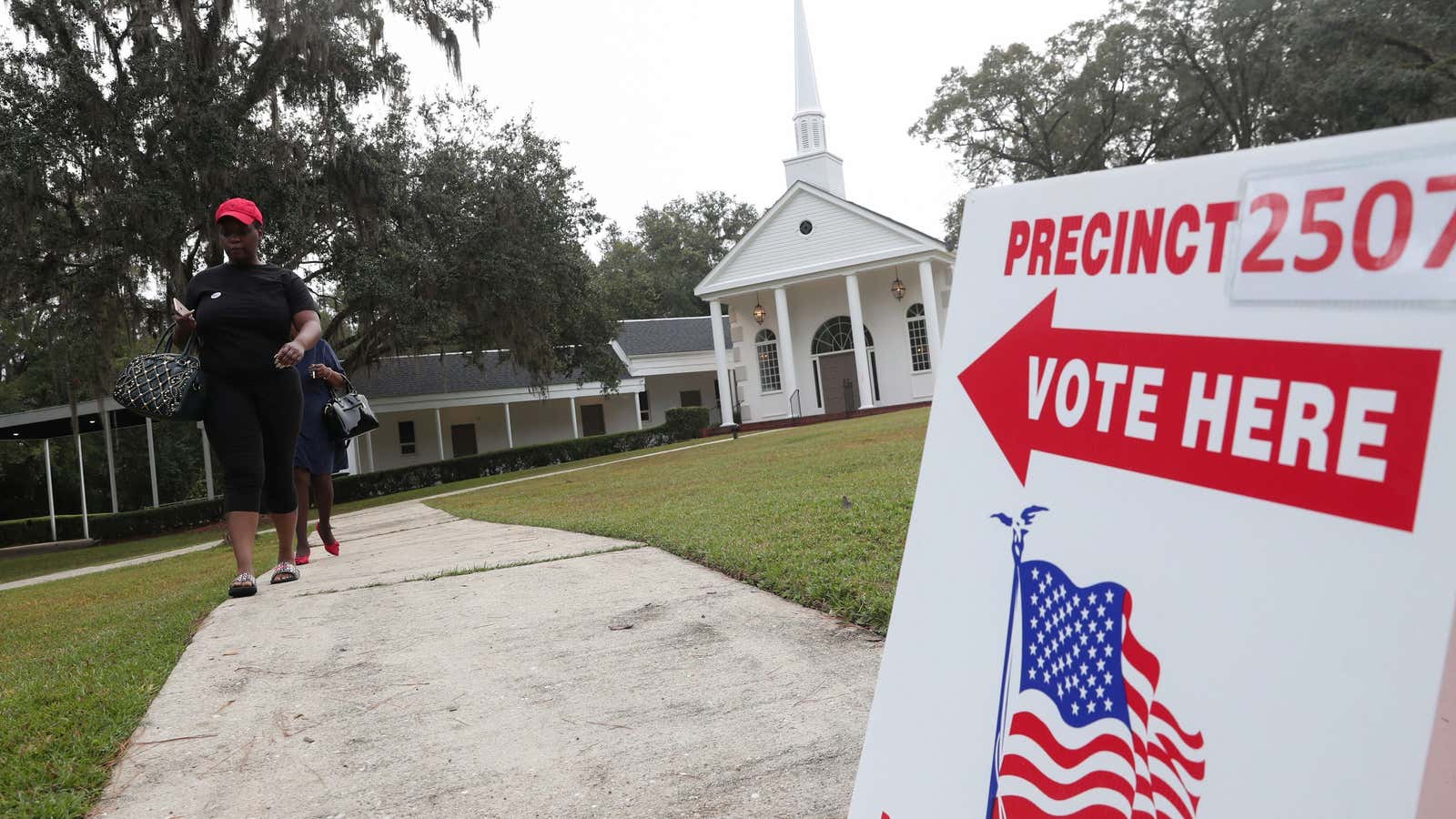American voters are expected to turn out in record numbers today to elect 435 House representatives, 35 senators, 36 state governors, and hundreds of local politicians.
The election has been called a referendum on Donald Trump’s divisive presidency. But with Trump and some Republican candidates dialing up racist, xenophobic rhetoric, and voter suppression efforts raising doubts about the electoral process in multiple states, the midterms have become a referendum on the very idea of America itself: What kind of democracy is the world’s biggest economy, which once promised “life, liberty, and the pursuit of happiness” to all?
The 2018 midterms are the most expensive in US history. It has the most female candidates ever, the most money from women donors, the highest expected voter turnout, and, many argue, the biggest consequences for any midterms in most Americans’ lives: healthcare for millions, voting rights, immigration reform, and the country’s role in the global order, among others.
Here’s how to keep track of the biggest races and issues playing out today:
The House seats that matter
Nearly every electoral forecast predicts that Democrats will take control of the House by winning back at least 23 seats—but after the 2016 presidential election, no one is taking anything for granted. Winning control of the House would give Democrats some control over Trump’s policies and proposals; it is also likely to launch a slew of investigations into his administration’s alleged corruption and misdeeds. If the Robert Mueller investigation finds grounds for impeachment, Democrats would start the process in the House.
The Cook Political Report, a nonpartisan election tracker, has outlined 46 extremely competitive races where the outcome is either uncertain or may result in a Democratic gain that could swing the whole House, as Quartz reports. The New York Times has turned that into a nifty interactive. (The newspaper’s paywall has been removed for Election Day, readers still have to register.)
The dreaded “needle” is back, on the New York Times’s Upshot. There will be three of them, actually, showing House seats, chance of a House Democrat majority, and overall popular vote for the House.
Key Senate races
The Senate’s narrow edge for Republicans (51 seats to 49) during the first two years of Trump’s presidency meant some failed votes for the GOP (notably Obamacare repeal). It also forced vice president Mike Pence to step in to get some votes to go Trump’s way. This midterm, they’re expected to keep Senate control, and possibly bump up their margin, because of the number of vulnerable Democratic seats.

Of the 35 Senate seats up for grabs, 23 are held by Democrats and two by Independents who vote with Democrats. And of those 23, 10 are in states that voted overwhelmingly for Trump in 2016, making them particularly hard to “flip.”
However, a handful of “tipping point” seats could change that tide: FiveThirtyEight thinks Texas, Tennessee, North Dakota, Nevada, and Missouri could go Democrat; the Wall Street Journal adds Florida, Tennessee, Arizona, and Montana as game-changers.
Politico, FiveThirtyEight, Cook, and 270towin all offer interactive maps and graphics tracking control of the Senate as the numbers come in (yes, there are more needles).
Follow governor’s races through local press
America’s local news organizations have been notoriously hollowed-out in recent years as profits plummeted in the industry, but a host of partnerships are bringing enhanced coverage to state races.
In Florida, Democrat Andrew Gillum is seeking to unseat Ron DeSantis, a Trump supporting incumbent who has taken money from and spoken at white supremacist organizations. The Tampa Bay Times has reporters at polling places around the state. Politico also has a live Florida map.
In Texas, the Texas Politics project is keeping a close eye on the Senate battle between Ted Cruz and Democratic challenger Beto O’Rourke. The Texas Tribune has identified over 30 “must watch” races, and the State is closely tracking five.
Georgia’s tight race between Brain Kemp, the Secretary of State who insisted on overseeing the elections despite also being a candidate, and lawyer Stacey Abrams, is one of the country’s closest-watched races. If elected, Abrams will be the country’s first female black governor. Meanwhile Kemp, who de-registered tens of thousands of mostly black voters, is being accused of voter suppression. The election might not be over on Tuesday after all—Georgia requires winners to get over 50% of the votes, and a third-party candidate could spark a run-off.
No matter what happens, local NBC affiliate 11Alive is promising up-to-the minute coverage, as is Politico.
Voter suppression
Georgia isn’t the only place where US citizens are having a hard time going to the polls. North Dakota‘s native Americans, Alaska‘s Inuits, and students in Texas face restrictive new voting requirements, or relocated polling places. In all cases, Republican administrators have put in place policies that will affect would-be Democratic voters.
Electionland, a partnership between ProPublica and multiple publications, including Quartz, is tracking complaints. You can view Google searches for suppression issues in real time across US states here.
Female candidates
Women are running in record numbers, and donating in record amounts this election. Rutgers University’s Center for American Women and Politics is tracking every single female candidate for state or national office.
Marijuana, Medicare and voting rights
Across the country, US voters are also deciding how their state will deal with a host of contentious issues, from legalizing marijuana to enfranchising to ex-felons.
In Michigan and North Dakota, voters will decide whether to legalize recreational marijuana use. In Missouri, Utah and Ohio, the drug could become legal for medical use. In Florida and Kentucky, voters will have their say on criminal penalties related to marijuana.
Voters in Alabama, Oregon and West Virginia will be considering multiple initiatives that would affect women’s access to abortion.
NPR has a dashboard of key ballot initiatives across the country.
A new type of exit poll
After 2016’s polling confusion, there are now two types of exit polls to predict voters’ choices, as NPR details: The National Election Pool, by Edison Research, relies on exit polls by ABC, CBS, CNN, and NBC. A new collaboration between Fox News, AP and University of Chicago’s NORC will debut VoteCast.
Natasha Frost contributed reporting.
